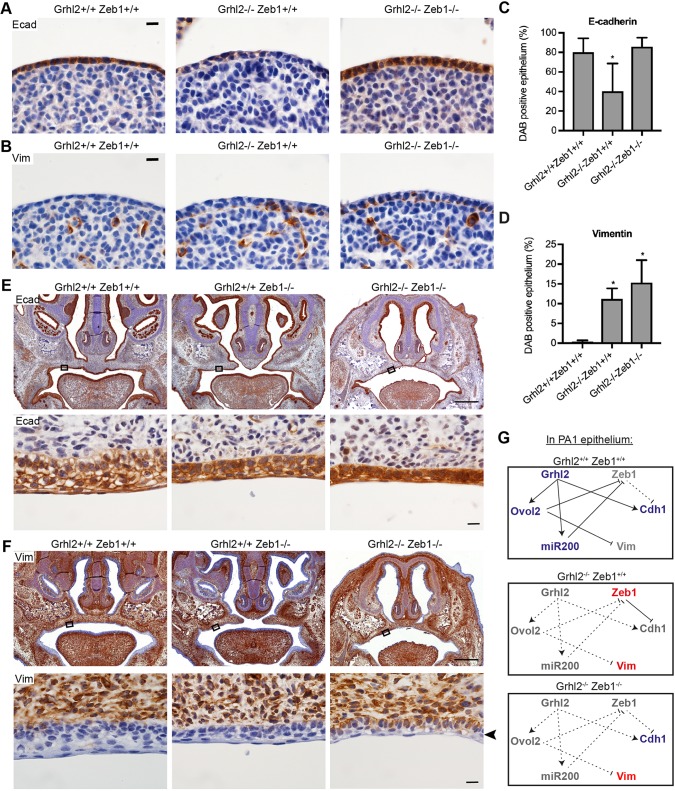Fig. 6.
E-cadherin expression is rescued in Grhl2−/−;Zeb1−/− palatal epithelium. (A,B) Immunohistochemistry on transverse sections through E10.5 PA1 for epithelial marker E-cadherin (Ecad; A) or mesenchymal marker vimentin (Vim; B). Images are representative of four embryos. (C,D) Quantification of the proportion of E10.5 PA1 epithelium staining for Ecad (C) or Vim (D). n=4 embryos. Graphs show mean±s.d. *P<0.05 versus wild type by one-way ANOVA with Tukey's multiple comparison test. (E,F) Coronal sections of E17.5 embryo heads stained with immunohistochemistry for Ecad (E) or Vim (F). Bottom rows show high-magnification images of regions of the palatal epithelium indicated by boxes. Arrowhead indicates vimentin-positive Grhl2−/−;Zeb1−/− palatal epithelium. Images are representative of three embryos of each genotype. (G) Schematic showing the pathways by which GRHL2 maintains epithelial cellular identity in PA1 epithelium. Blue genes promote the epithelial phenotype, red genes promote the mesenchymal phenotype and grey genes are not expressed. In wild-type embryos (top), GRHL2 directly transactivates Cdh1, Ovol2 and miR-200 microRNAs. The latter two factors repress Zeb1 and Vim. In the absence of GRHL2 (middle), ectopically expressed ZEB1 represses Cdh1, and the lack of OVOL2-mediated repression leads to ectopic Vim expression. In the absence of both GRHL2 and ZEB1 (bottom), Cdh1 and Vim are free from transcriptional repression so are both expressed. Scale bars: 500 μm (top rows in E,F) and 10 μm (A,B, bottom rows in E,F).

